
Features
Technology
Hatchery Hack: New year, new hatchery
Hatchery managers weigh in on the latest innovations
January 10, 2024 By Nicole Kirchhoff
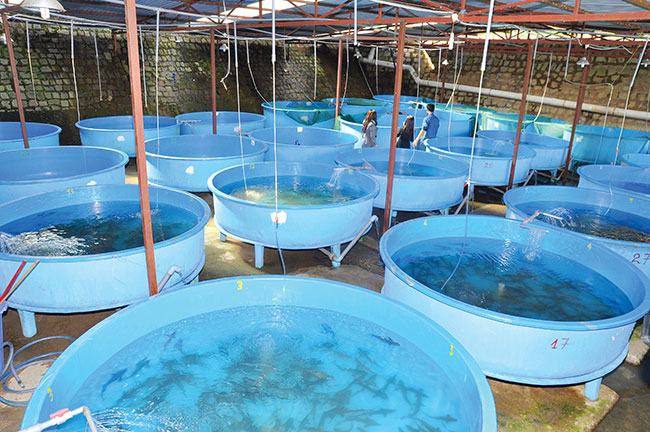 (Photo: duybox/Getty Images Plus/Getty Images)
(Photo: duybox/Getty Images Plus/Getty Images) This time of year we are all making assessments and goals and the same goes for hatcheries. Did last year’s production and business go as planned? How can we be proactive to make this one the best year yet?
One way hatcheries can make advancements in production and economics is by being on trend; whether it is altering hatchery space allocation to address the latest production demands, or adopting new technology to reduce costs.
I know for my business, Live Advantage Bait LLC, we are planning both. In production, we are planning to make shifts in allocation of broodstock tanks and larval schedules for the species we produce with shifting customer preferences.
For example, demand for one species of our marine baitfish – pinfish (Lagodon rhomboides) – has declined, while another – Atlantic croaker (Micropogonias undulatus) – has skyrocketed. And demand for marine food fish species such, as red drum (Sciaenops ocellatus), are also increasing in both frequency and size of orders.
We are also adopting new technology such as reliable rural internet providers and wireless sensors. Artificial intelligence (AI) will potentially reduce extreme weather production risks and make production planning a lot easier to track.
In nutrition, we are also going to roll out into our main production tanks some new rotifer and artemia replacement larval feeds we trialled last year with high success.
As diverse as the international aquaculture industry is, so are our annual reflections and new trends. Therefore, I asked five international leaders to share what they are excited about for the upcoming year.
Production
Tom McCrudden
President, Great Florida Shellfish Company
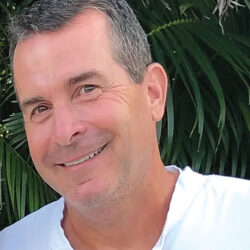 “The shellfish industry has seen numerous obstacles and disasters related to hurricanes and seed shortages for both clams and oysters. To meet these increased demands, we have increased our production over 50 per cent from last year and plan to increase another 50 per cent in 2024. We are currently building an additional hatchery/nursery on Florida’s West Coast to allow diversity and risk due to hurricane or water quality issues. This will also allow us to provide oysters to the panhandle area who have been plagued with consistent seed supplies for many years. Along with the shellfish industry’s increased demand for seed, the restoration needs further stretch the existing hatchery’s ability to provide these needs. We are able to balance these demands by refining our production facilities and hiring qualified staff to operate our various locations and the ability to provide seed year-round. It is important for the private sector to step up and provide these services for industry and restoration needs so universities or other non-profit organizations do not compete with existing hatcheries. This practice of ‘supplemented’ research groups stepping in to ‘help’ provide seed for new species, industry, or restoration needs has harmed the development of private hatcheries and their ability to survive and still occurs to this day.”
“The shellfish industry has seen numerous obstacles and disasters related to hurricanes and seed shortages for both clams and oysters. To meet these increased demands, we have increased our production over 50 per cent from last year and plan to increase another 50 per cent in 2024. We are currently building an additional hatchery/nursery on Florida’s West Coast to allow diversity and risk due to hurricane or water quality issues. This will also allow us to provide oysters to the panhandle area who have been plagued with consistent seed supplies for many years. Along with the shellfish industry’s increased demand for seed, the restoration needs further stretch the existing hatchery’s ability to provide these needs. We are able to balance these demands by refining our production facilities and hiring qualified staff to operate our various locations and the ability to provide seed year-round. It is important for the private sector to step up and provide these services for industry and restoration needs so universities or other non-profit organizations do not compete with existing hatcheries. This practice of ‘supplemented’ research groups stepping in to ‘help’ provide seed for new species, industry, or restoration needs has harmed the development of private hatcheries and their ability to survive and still occurs to this day.”
Equipment and engineering
George Nardi
Vice-president of Aquaculture Services, Innovasea
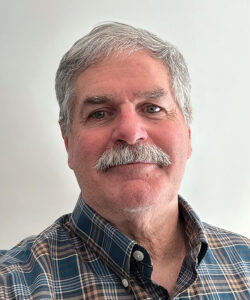 “Having 30 years experience in the marine finfish hatchery industry, I have been encouraged at Innovasea to see new equipment and technologies that either reduces effort or enables better hatchery production and survival. For example, improved hatchery monitoring, automation and smart components that can react to a situation, be it low oxygen, sub optimum pH, CO2, or another parameter on a 24/7 basis. Equipment such as drum filters that only use the minimum water needed or degassing units whose operation is linked to CO2 levels. In an era of ever increasing HAB’s and other toxins in the coastal environment, developing robust water intake systems using ozone has proven its worth. Of course, none of these advances will mean anything unless there is a solid animal husbandry foundation in place for live feed and larval fish culture.”
“Having 30 years experience in the marine finfish hatchery industry, I have been encouraged at Innovasea to see new equipment and technologies that either reduces effort or enables better hatchery production and survival. For example, improved hatchery monitoring, automation and smart components that can react to a situation, be it low oxygen, sub optimum pH, CO2, or another parameter on a 24/7 basis. Equipment such as drum filters that only use the minimum water needed or degassing units whose operation is linked to CO2 levels. In an era of ever increasing HAB’s and other toxins in the coastal environment, developing robust water intake systems using ozone has proven its worth. Of course, none of these advances will mean anything unless there is a solid animal husbandry foundation in place for live feed and larval fish culture.”
Nutrition
Scott Snyder, PhD
Nutritional technology manager, Ziegler Bros. Inc.
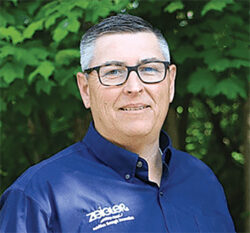 “I am most excited for the commercialization of several new to aquaculture ingredient candidates. Demonstrated by the greatly reduced Peruvian fishmeal quotas in 2023; our continued reliance on marine-based proteins and oils coupled to limited commercialization efforts of alternatives left our industry reeling from the highest aquafeed costs in history. Continued increased operational costs along with flat market value of aquaculture products have led to tremendous reduction in aquaculture production globally. As a means to survival, large segments of the aquaculture industry incorporated low-quality, lower-priced feeds into their systems. Unfortunately, the result of using poor quality feeds manifested in increased disease, reduced water quality, and ultimately even further reduced farming success. In and of itself, aquaculture cannot bring about the commercialization of novel ingredients like fermented plant-based proteins, single cell proteins, and omega-3 rich oils. I am hopeful that in 2024 we see increased collaborative approaches, linking aquaculture with pet, poultry, swine and other feed-intensive agricultural industries to concentrate commercialization efforts on a few key novel ingredients with the goal of stabilizing feed costs.”
“I am most excited for the commercialization of several new to aquaculture ingredient candidates. Demonstrated by the greatly reduced Peruvian fishmeal quotas in 2023; our continued reliance on marine-based proteins and oils coupled to limited commercialization efforts of alternatives left our industry reeling from the highest aquafeed costs in history. Continued increased operational costs along with flat market value of aquaculture products have led to tremendous reduction in aquaculture production globally. As a means to survival, large segments of the aquaculture industry incorporated low-quality, lower-priced feeds into their systems. Unfortunately, the result of using poor quality feeds manifested in increased disease, reduced water quality, and ultimately even further reduced farming success. In and of itself, aquaculture cannot bring about the commercialization of novel ingredients like fermented plant-based proteins, single cell proteins, and omega-3 rich oils. I am hopeful that in 2024 we see increased collaborative approaches, linking aquaculture with pet, poultry, swine and other feed-intensive agricultural industries to concentrate commercialization efforts on a few key novel ingredients with the goal of stabilizing feed costs.”
Jesse Trushenski, PhD
Chief science officer, Riverence
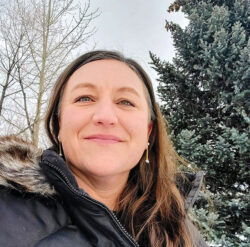 “We are most excited about the availability of STIM’s SuperSmolt Feed Only in the USA. SuperSmolt Feed Only is a feed that predictably induces smoltification and keeps salmonids in the smoltification window—without the need for photoperiod manipulation or artificial ‘winter signal’ to synchronize smoltification. Several groups in the USA are already using the product, and we think SuperSmolt Feed Only could be used to manage the smoltification process in other conservation hatcheries and commercial farms.
“We are most excited about the availability of STIM’s SuperSmolt Feed Only in the USA. SuperSmolt Feed Only is a feed that predictably induces smoltification and keeps salmonids in the smoltification window—without the need for photoperiod manipulation or artificial ‘winter signal’ to synchronize smoltification. Several groups in the USA are already using the product, and we think SuperSmolt Feed Only could be used to manage the smoltification process in other conservation hatcheries and commercial farms.
Disease
Matthijs Metselaar, DVM, PhD, Dipl. ECAAH, CertAqV, MIFM, MRCVS
Owner and managing director, Aquatic Vets Ltd. UK
Specialist aquatic veterinary surgeon
RCVS specialist in fish health & production
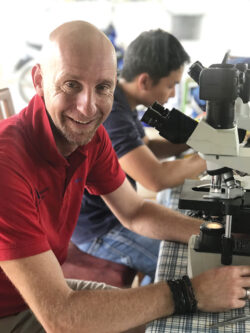 “Presence of pathogen does not equal presence of disease. I am looking forward to the increased understanding of pathogen-host interaction that AI will start to unravel in advance sectors such as salmon. In most sectors, like sub-Saharan aquaculture, we are still working on the basics. A holistic approach is vital here.”
“Presence of pathogen does not equal presence of disease. I am looking forward to the increased understanding of pathogen-host interaction that AI will start to unravel in advance sectors such as salmon. In most sectors, like sub-Saharan aquaculture, we are still working on the basics. A holistic approach is vital here.”
Print this page
Advertisement
- First ever crablets produced in Kenya’s mud crab farm
- New Hampshire researchers explore effects of ocean acidification on juvenile lobsters





